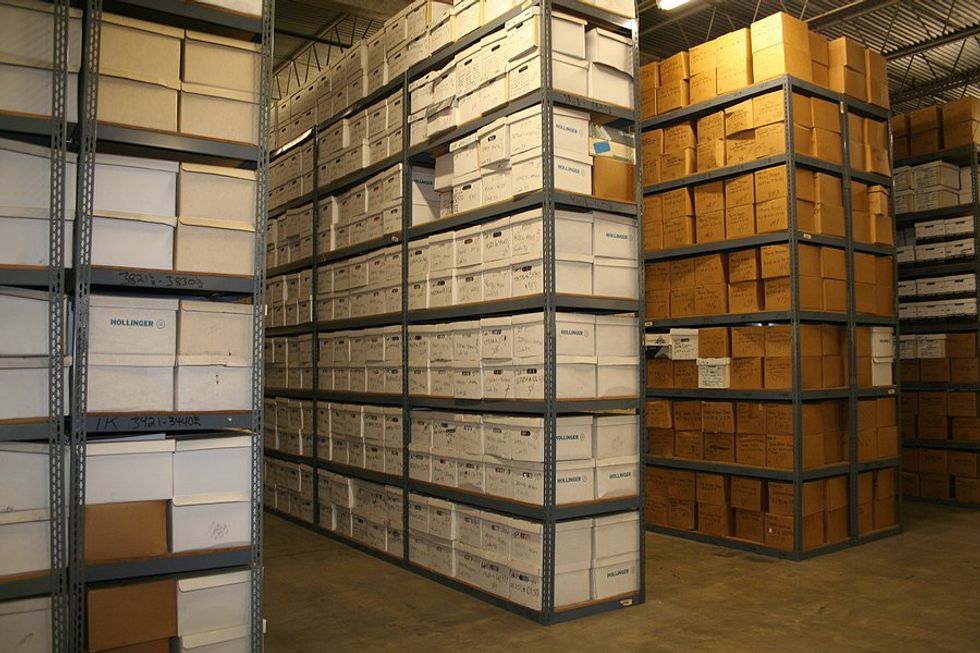
Is your organization pretty reliant on paper because they don’t think they would benefit from using a document imaging or enterprise content management (ECM) system? If so, you may want to ask yourself some questions about the business.
Do you:
1. Have decentralized locations and continually ship/mail documents between locations? And if you don’t have an internal courier, how much do you spend on shipping expenses?
2. Have challenges finding documents because of lost/misplaced documents?
3. Have multiple versions of the same document, and not sure which is the most current version (aka version control issues)? Have you ever used an old expense report form only to have it rejected by finance?
4. Have difficulty making sure specific documents such as employee files or legal contracts are only accessible by the appropriate individuals?
5. Have too many manual processes (versus automated workflows)? If so, how easy is it to escalate to keep the process moving when individuals are out of the office?
6. Have multiple storage boxes of paper documents housed in a secured off-site records storage facility? If so, did you do your due diligence and incorporate them into your third-party risk management (TPRM) plan?
Planning For A New ECM

Bigstock
If so, you may benefit from doing an analysis of whether an ECM can address pain points. You can create a write-up showing the benefits and addressing any concerns. I like creating decision papers.
If the organization decides to move forward and purchase an ECM, it starts with a lot of planning. Define clear goals and objectives, corporate governance, as well as resources needed including people and monies. Make sure you communicate, communicate, and communicate addressing any concerns.
Compile a list of the documents defining information such as the document type, document access security, indexes (bar codes), and other metadata. Another consideration is whether to scan going forward or to “backfile” certain documents (scan existing hard copies) such as employee files.
Don’t forget record retention. Your records retention schedule defines the legal and regulatory requirements of how long each document type will be retained. You don’t want to destroy documents too early or unnecessarily save documents (especially in the event of litigation where you have to produce the paper in lieu of images). You can mitigate compliance and legal risks because if you’re non-compliant, there could be fines, legal penalties, and reputational damage.
Implementing For Success (Minimizing Any Pitfalls)

Bigstock
I typically implement one department at a time and potentially start with either accounts payable (AP) or human resources (HR). These areas can have substantial benefits and present a clear return on investment (ROI) analysis. Provide support and have a comprehensive training program to make sure everyone is properly trained, which can increase user adoption. You’ll generally be able to take that blueprint to repeat and implement the other departments in a phased approach within the organization.
When you have a well-implemented ECM, you’ll have streamlined processes and customizable search capabilities enabling users to quickly find documents within a centralized repository. This will improve efficiency and reduce a number of administrative costs (such as printing, mailing, and storage). And if you integrate the ECM with systems such as your ERP or CRM, you can take the benefits to another level. As the organization continues to grow, the ECM will be better able to scale the business.
For more information on the benefits of managing content with document imaging, follow me on LinkedIn!
- How To Implement An Enterprise Content Management (ECM) System For Your Organization ›
- Adapt And Thrive With Project Management Skills In Any Workplace! ›
- 4 Critical Components To Risk Management Success ›
- Executive Spotlight: What Automation Means For The Future Of Work ›
- How To Implement The Right Internal Controls - Work It Daily ›
- Managing Third-Party Risk: Turn Weak Links Into Strengths - Work It Daily ›

 Bigstock
Bigstock Bigstock
Bigstock Bigstock
Bigstock


